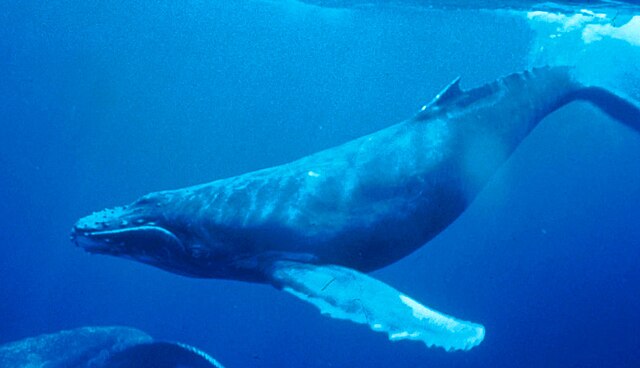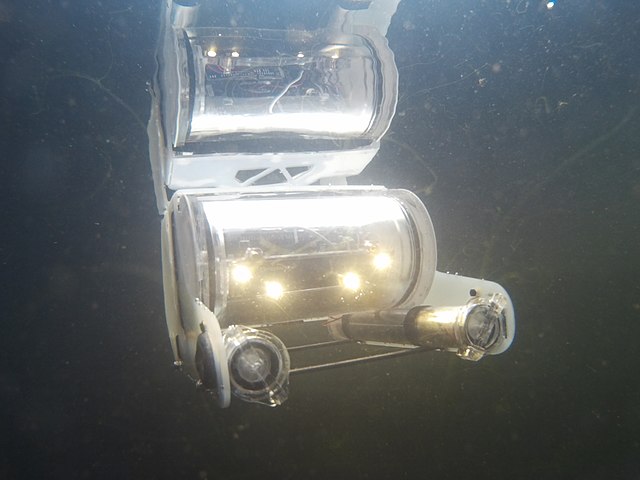06 December, 2015
Startide Rising by David Brin
1. This novel switches points of view rapidly, but keeps most PoVs within a chapter. Each chapter break typically signals a PoV shift, but sometimes chapters are extremely short—like half a page or so. By having so many PoVs, this constant shifting effectively couches the action of the Streaker’s crew in its context. Brin keeps these switches legible by limiting his PoV character count—15 in the Streaker’s crew with around 5-10 aliens—and signposting the switches with chapter breaks, of which there are 124.
2. These PoV switches are very effective with worldbuilding. Brin shows willingness to allow a variety of characters to have a voice in the novel, but he also delves into their stances on the political issues, their unique characteristics, and their being. This variety and delving effectively builds the world while he’s telling the story. This is well-done here. He doesn’t overload the front, the middle, or the finish with world-building. He drips information out at a pace that is legible and easy to follow, while still creating an incredibly complex galactic society, and all without losing sight of the story and excitement.
3. [Added 12/14/15: Another thing Brin does well is grab and sustain the tension inherent in the situation he set up. The book takes place over about a month, maybe less than a month, and the situation doesn't significantly change throughout that time, but the tension does grow. The tension grows from characters essentially making their last play, trying to fulfill their desires through mutiny, assassination attempts, setting up traps, going AWOL, glimpsing and then grasping for spirituality, helping others at a cost to oneself, et cetera. These plays to fulfill their personal desires bring tension to the story, while the constant shifts in PoV allow the tension of the battle above the planet to substitute for tensionless times on the planet below. It essentially bleeds over due to the quickness of the shifts: after a chapter about the battle above, a chapter of a couple characters falling in love is tensionless, but I don't notice because the tension of the battle above is still with me.]
4. Brin builds characters well: each crewmember in each group is distinct, and I think that’s hard to do. He shows multiple sides of the mutineers, multiple sides of the ship’s crew, and multiple aliens. For instance, there are a few ship’s officers, and they’re very different people: the captain is forward looking and more willing to sacrifice one crewmember for the good of the whole, the second-in-command is a stickler for rules and desires quick solutions that require bravery, Hikahi is concerned about her crew and less willing to sacrifice even one—even an enemy. Brin keeps each of the main characters and secondary characters distinct, and does a good job of it. This characterization makes the whole novel feel realistic, despite the characters being sentient, spacefaring dolphins, chimpanzees, and humans.
5. But the pacing is not without problems: about 30% of the way in, something interesting of lasting importance to the story finally happens—the betrayal is finally revealed to the reader. Before that, there was just the arrival at a new planet, scant overly nebulous hints at tension within the crew, and a tsunami: the first just the setup, the middle making it seem like Brin wasn’t quite sure where he was headed, and the last a short-term tension at best. Once this point is hit about a third into the novel, it really takes off and the pacing is all but perfect from then on. Unfortunately that first third is a little slow. I was wondering where everything was going and why I should care. The inclusion of the tsunami and the weirdness of the planet in this part do serve important roles though: they set up the way the Streaker breaks free at the end, keeping the ending from being too much of a deus ex machina.
6. The setup is fantastic though, and that’s part of why the first third was disappointing. It’s a starship, mid-chase, landing on a planet to hide, followed by fleets of hostile aliens who are content to let it lie on the planet and duke it out in space for the right to capture the Streaker. There are no opening murders—a big advantage to any speculative fiction novel—and the story starts in media res. This opening is awesome, I just wish it wasn’t betrayed by the next third of the novel.
7. The writing is okay. It’s clear but nothing stood out as great or terrible. It’s not as efficient as some science fiction authors like Asimov, but that’s not a negative statement at all. Brin’s prose effectively allows some variety in language and sentence structure. This is his second novel, I believe, and I hope he gets better. This is a solid base to start from as a writer.
8. The theme of this novel is that diversity is both positive and negative. A diverse culture requires more from its members, but in so doing, greater heights can be achieved. The crew of the Streaker has multiple races of dolphins in addition to its token chimpanzee and humans. At the end, they use that diversity and the diversity of the aliens around the planet to escape the traps set for them by alien fleets. But it’s not without costs of racial tension in this high-stress environment: they first weather an assassination attempt, a mutiny, some desertion, and misunderstandings that require much sacrifice from the characters. I think Brin deals with this theme even-handedly, showing some good and some bad and, ultimately, coming down to a conclusion of diversity is worth the risks.
9. In short, this is a good novel, not great. It has a wonderful variety of situations, characters, motivations, and sentence structures. Match this variety to the story that is, for the most part, well-told, and a theme that is applicable and universal, and this becomes an enjoyable, good book.
Labels:
1983,
David Brin,
Hugo Award,
Locus Award,
Nebula Award,
Science Fiction,
Uplift Universe
Subscribe to:
Post Comments (Atom)









No comments:
Post a Comment